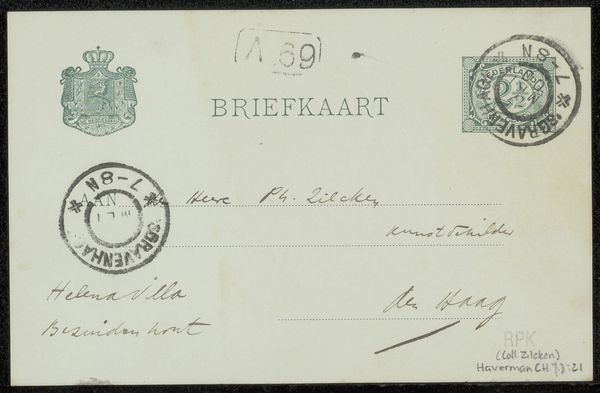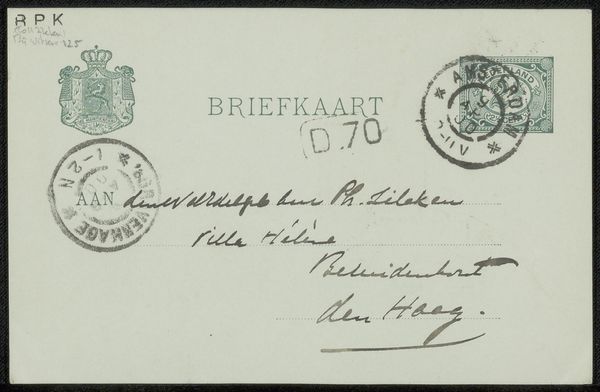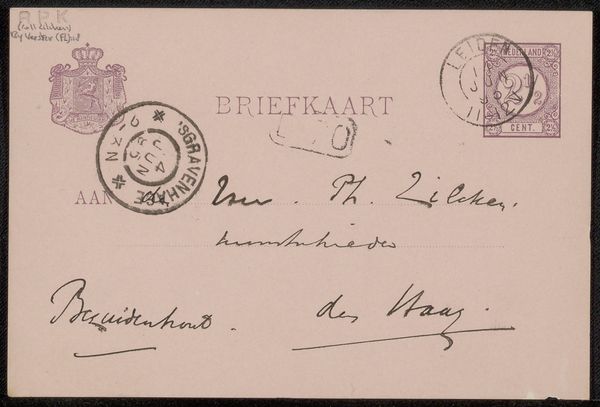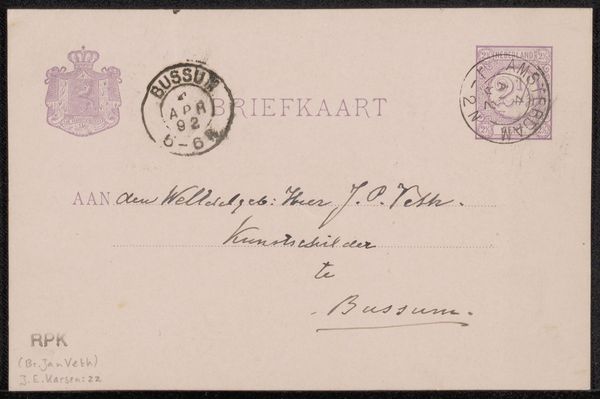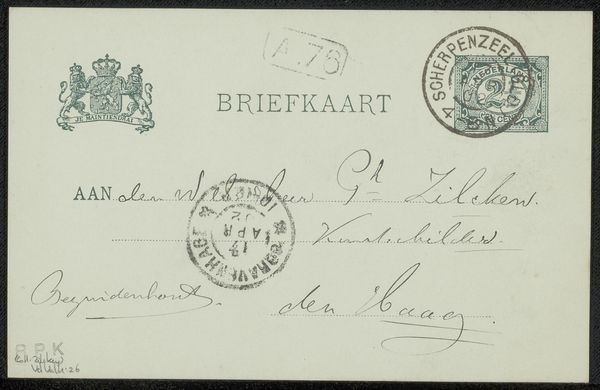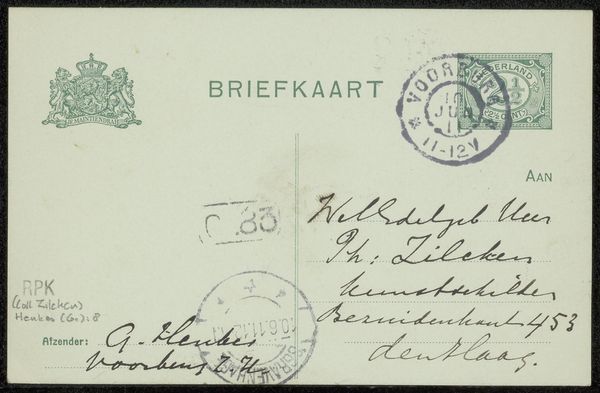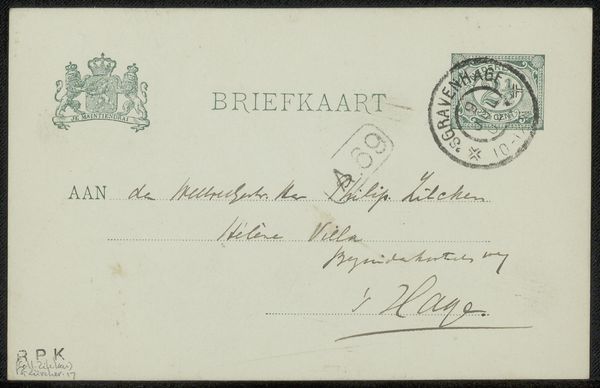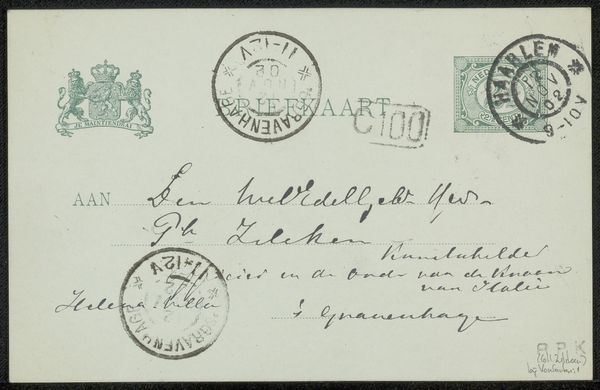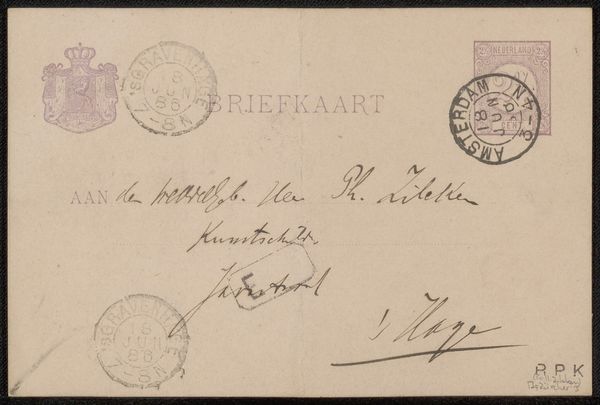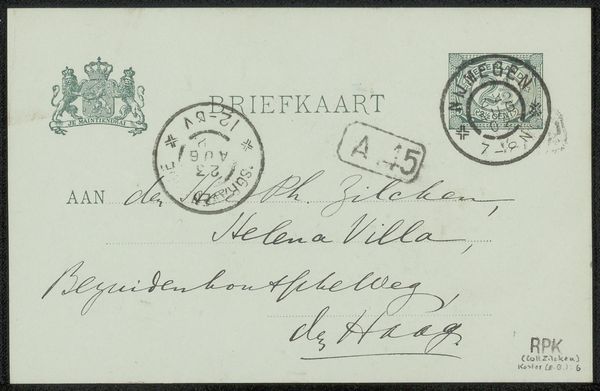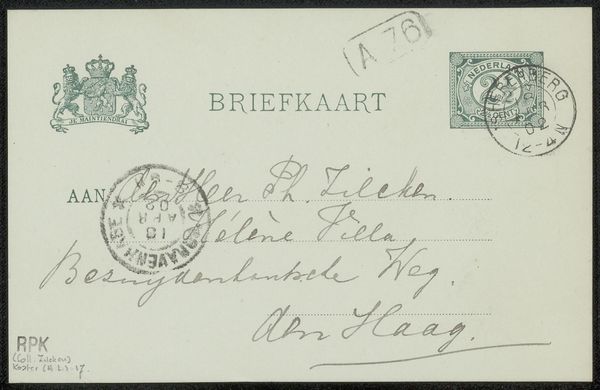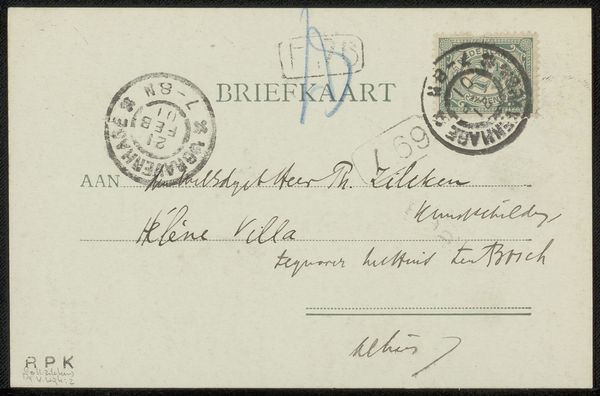
#
pen drawing
#
pen illustration
#
pen sketch
#
old engraving style
#
personal sketchbook
#
ink drawing experimentation
#
pen-ink sketch
#
pen work
#
sketchbook drawing
#
sketchbook art
Copyright: Rijks Museum: Open Domain
Curator: Before us is "Briefkaart aan Philip Zilcken" by Hendrik Johannes Haverman, a pen drawing likely created before 1905. It’s currently held in the Rijksmuseum. Editor: My initial feeling is a strange mix of formality and intimacy. It’s a postcard, inherently personal, yet the stamps and official seals give it this governmental, almost bureaucratic aura. Curator: Precisely! The symbolism here is quite interesting when we situate it in the late 19th-century context. Postcards became increasingly popular, acting as both a mode of quick communication and a miniature canvas for artists to circulate ideas. For the rising middle class it became a signifier of status. Editor: I am interested by the stamps as symbolic reminders of their original socio-political significance – tools used by governing bodies to implement specific policies that enabled the smooth and orderly functioning of an interconnected world. They are symbols of national identity but also control. Curator: Exactly, the act of sending a postcard itself signifies a changing landscape in communication, and one that wasn't without social implications, especially regarding the relationship between private and public lives. These messages now had to negotiate governmental oversight, as represented through their various signs and emblems. Editor: And, beyond the macro political sphere, at a more intimate, local scale, it evokes thoughts about networks of creativity – Haverman sending this to Zilcken, the "kunstverzamelaar" or art collector, written near the address. What sort of visual or even emotional symbolism are encoded in the very *act* of sending this postcard. Curator: Indeed. I imagine, there may also be commentary woven within Haverman's drawing itself regarding the very political and socio-economical frameworks the postcard relies upon. As art historians and theorists, we are responsible for interpreting, not just assuming. Editor: A beautiful example of how something as commonplace as a postcard can contain a wealth of stories. Curator: Yes, hopefully we have offered the museum visitor the inspiration to embark on that journey of analysis!
Comments
No comments
Be the first to comment and join the conversation on the ultimate creative platform.

